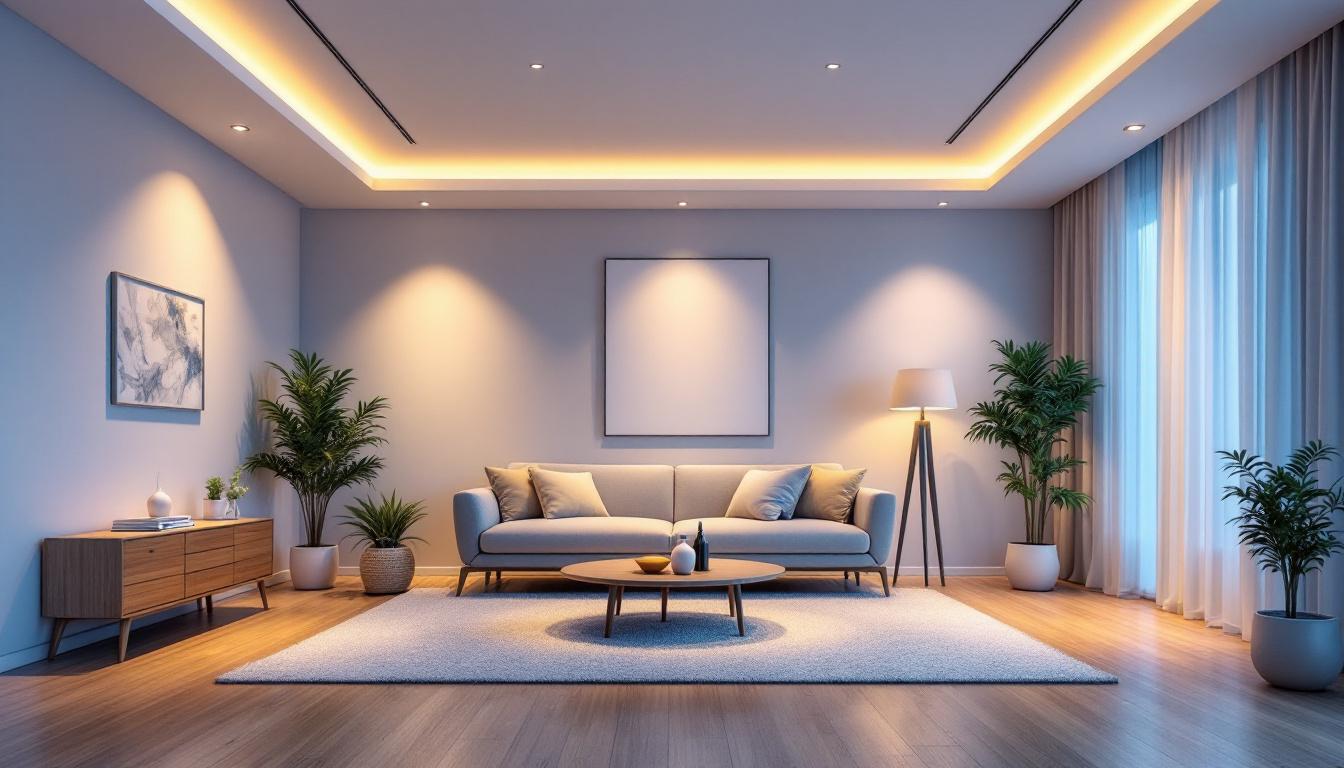
Lighting design plays a crucial role in enhancing the aesthetic appeal and functionality of any space. For lighting contractors, understanding the nuances of recessed can lighting is essential. This article provides eight masterful tips that can elevate the effectiveness and efficiency of recessed can installations, ultimately leading to satisfied clients and successful projects.
Before diving into advanced techniques, it’s vital to grasp the fundamental principles of recessed can lighting. Recessed cans, also known as downlights, are fixtures installed into the ceiling, providing a clean and modern look. They can be used for both ambient and task lighting, depending on the bulb type and placement. This versatility makes them a popular choice in various settings, from residential homes to commercial spaces, where aesthetics and functionality must go hand in hand.
Familiarity with the different types of recessed cans, such as new construction, remodel, and shallow cans, is essential. Each type serves specific applications and installation scenarios, making it critical for contractors to choose the right one for their projects. For instance, new construction cans are designed for homes that are still being built, allowing for easier installation, while remodel cans are perfect for retrofitting existing spaces without extensive ceiling alterations. Shallow cans, on the other hand, are ideal for areas with limited ceiling space, making them a versatile option for various architectural designs.
The choice of bulb significantly impacts the performance and ambiance of recessed lighting. LED bulbs are increasingly popular due to their energy efficiency and long lifespan. However, incandescent and halogen bulbs still have their place, particularly in applications requiring warmer light tones. LEDs not only consume less energy but also generate less heat, making them a safer choice for enclosed fixtures. Moreover, advancements in LED technology have led to a variety of styles and brightness levels, allowing for greater customization in lighting design.
Contractors should also consider the color temperature of the bulbs. Warmer tones (2700K-3000K) create a cozy atmosphere, while cooler tones (4000K-5000K) are ideal for task-oriented spaces. Understanding these nuances helps in recommending the right bulb to clients, ensuring their needs are met. Additionally, the color rendering index (CRI) is another crucial factor; bulbs with a higher CRI provide more accurate color representation, which is particularly important in areas like kitchens and art studios where color fidelity is essential. By educating clients on these aspects, contractors can enhance their lighting choices and contribute to a more satisfying overall experience in their spaces.
A well-thought-out layout is crucial for maximizing the effectiveness of recessed can lighting. Contractors should take into account the room’s function, size, and furniture placement. A common rule of thumb is to space the cans approximately 4 to 6 feet apart, but this can vary based on the height of the ceiling and the desired light intensity.
Additionally, consider the focal points within the room. For example, in a living room, recessed cans can be strategically placed to highlight artwork or architectural features. This not only enhances the visual appeal but also adds depth to the overall lighting scheme.
The height of the ceiling plays a significant role in determining the type and placement of recessed lighting. Higher ceilings may require more powerful bulbs or additional fixtures to achieve the desired illumination. Conversely, lower ceilings can benefit from shallow cans that minimize the risk of overwhelming the space.
When planning the layout, it’s essential to account for the vertical space. Aiming the lights slightly downward can help create a more inviting atmosphere, while upward angles can add drama and dimension to a room.
The trim of a recessed can light not only affects aesthetics but also influences the light distribution and intensity. There are various trim styles available, including baffle, reflector, and adjustable trims. Each serves a unique purpose and can dramatically change the lighting effect in a room.
Baffle trims are designed to reduce glare and are ideal for general lighting. Reflector trims, on the other hand, enhance brightness and are suitable for task lighting. Adjustable trims allow for directional lighting, making them perfect for highlighting specific areas or objects.
Choosing the right color and finish for the trim can enhance the overall design of the space. White trims are versatile and blend seamlessly with most ceilings, while black trims can create a striking contrast in modern settings. Metallic finishes can add a touch of elegance, making them suitable for upscale environments.
Contractors should also consider the client’s preferences and the overall design theme when selecting trim finishes. A cohesive look will not only please the client but also elevate the quality of the installation.
Dimming capabilities are an essential feature of recessed can lighting, allowing for flexibility in ambiance and energy savings. Many clients appreciate the ability to adjust lighting levels based on their needs or mood. Therefore, incorporating dimmable fixtures and compatible dimmer switches is a smart choice for any lighting contractor.
When selecting dimmers, it’s crucial to ensure they are compatible with the chosen bulbs. LED bulbs, for instance, require specific dimmers to function correctly without flickering. Educating clients on the benefits of dimming can also enhance their overall satisfaction with the lighting installation.
With the rise of smart home technology, integrating recessed can lighting with smart systems has become increasingly popular. This allows homeowners to control their lighting remotely, set schedules, and even adjust colors. Contractors should familiarize themselves with various smart lighting options and ensure that the installations are compatible with these systems.
Offering smart lighting solutions can set a contractor apart from competitors and appeal to tech-savvy clients. Providing guidance on the best products and installation practices can enhance the overall service and satisfaction.
Energy efficiency is a significant consideration for modern lighting installations. Clients are increasingly conscious of their energy consumption, making it essential for contractors to recommend energy-efficient options. LED recessed cans are a prime choice, offering substantial energy savings compared to traditional incandescent bulbs.
In addition to selecting energy-efficient bulbs, contractors should also educate clients about the long-term savings associated with these choices. Highlighting the lower energy bills and reduced maintenance costs can make a compelling case for investing in energy-efficient lighting solutions.
Staying informed about local building codes and energy efficiency regulations is crucial for lighting contractors. Many regions have specific requirements regarding energy consumption and lighting installations. Ensuring compliance not only protects the contractor but also provides peace of mind for clients.
Contractors should regularly review and update their knowledge of regulations to maintain compliance and avoid potential issues during inspections. This proactive approach can enhance the contractor’s reputation and reliability in the industry.
Proper installation is key to the performance and longevity of recessed can lighting. Contractors should follow best practices for installation, including ensuring that the fixtures are securely mounted and properly wired. Taking the time to double-check connections and test the fixtures before finishing the job can prevent future issues.
It’s also essential to consider the insulation around recessed cans. Using IC-rated (Insulation Contact) fixtures is crucial in insulated ceilings to prevent overheating and potential fire hazards. Understanding the installation process thoroughly can help contractors avoid common pitfalls and ensure a successful installation.
Having the right tools and equipment is vital for efficient and effective installations. Contractors should invest in high-quality tools that facilitate precise cutting and wiring. Additionally, using a laser level can help ensure accurate placement of fixtures, resulting in a professional finish.
Regular maintenance and calibration of tools can also improve efficiency and accuracy. A well-prepared contractor is more likely to deliver high-quality work, leading to satisfied clients and repeat business.
Safety should always be a top priority during any lighting installation. Contractors must adhere to safety protocols to protect themselves and their clients. This includes wearing appropriate personal protective equipment (PPE) and ensuring that the work area is free of hazards.
Additionally, understanding electrical safety is crucial. Contractors should be familiar with proper wiring techniques and ensure all connections are secure to prevent electrical hazards. Educating clients about safety features, such as circuit breakers and surge protectors, can also enhance their overall satisfaction and confidence in the installation.
In the event of an emergency, having a plan in place can make a significant difference. Contractors should be prepared for unexpected situations, such as electrical failures or equipment malfunctions. Familiarizing themselves with emergency procedures and having a toolkit on hand can help address issues promptly.
Communicating with clients about emergency procedures and safety measures can also foster trust and confidence in the contractor’s expertise. A well-prepared contractor is more likely to handle emergencies effectively, ensuring a smooth experience for the client.
Effective communication is key to building strong relationships with clients. Contractors should take the time to understand their clients’ needs, preferences, and budget constraints. This not only helps in providing tailored solutions but also fosters trust and satisfaction.
Regular updates throughout the installation process can keep clients informed and engaged. Addressing any concerns or questions promptly can enhance the overall experience and lead to positive word-of-mouth referrals.
Following up with clients after the installation is complete is an excellent way to maintain relationships and gather feedback. This can provide valuable insights into the client’s satisfaction and any areas for improvement. Additionally, it opens the door for future projects or referrals.
Offering maintenance services or warranties can also enhance client satisfaction and demonstrate a commitment to quality. A strong post-installation relationship can lead to repeat business and a solid reputation in the industry.
Mastering recessed can lighting is essential for lighting contractors looking to excel in their field. By understanding the basics, planning layouts, selecting the right components, and prioritizing safety and communication, contractors can deliver exceptional results that meet client needs and expectations.
Implementing these tips can not only enhance the quality of installations but also foster long-lasting relationships with clients. As the lighting industry continues to evolve, staying informed and adaptable will ensure continued success and growth.
Ready to take your lighting projects to the next level? At LumenWholesale, we provide lighting contractors like you with the highest quality, spec-grade recessed can lighting products at prices that can’t be beaten. Say goodbye to local distributor markups and hello to our extensive selection that meets rigorous industry standards. With free shipping on bulk orders, you can stock up on superior lighting solutions and enjoy the best value without any hidden costs. Elevate your installations with the perfect blend of quality, affordability, and convenience. Wholesale Lighting at the Best Value is just a click away.

Discover how wall-mounted solar lanterns are revolutionizing lighting contractors’ projects by offering sustainable, cost-effective, and aesthetically pleasing solutions.

Discover the key insights lighting contractors need to meet client expectations in modern projects.

Discover the ultimate guide for lighting professionals with our essential checklist for sourcing ceiling fan parts online.

Discover everything about lights ballast in just 5 minutes—learn how it improves lighting efficiency, reduces costs, and boosts contractor expertise. Read now!.